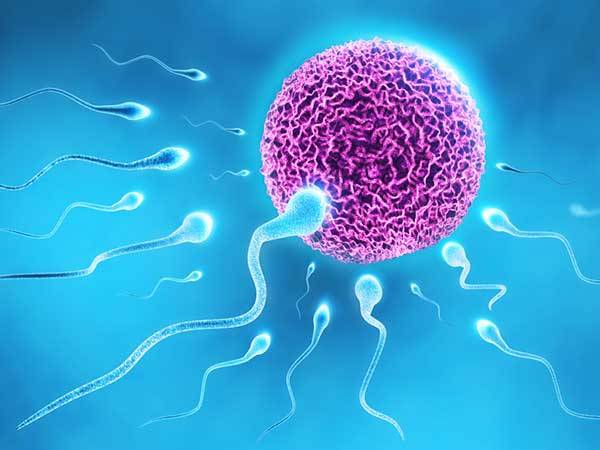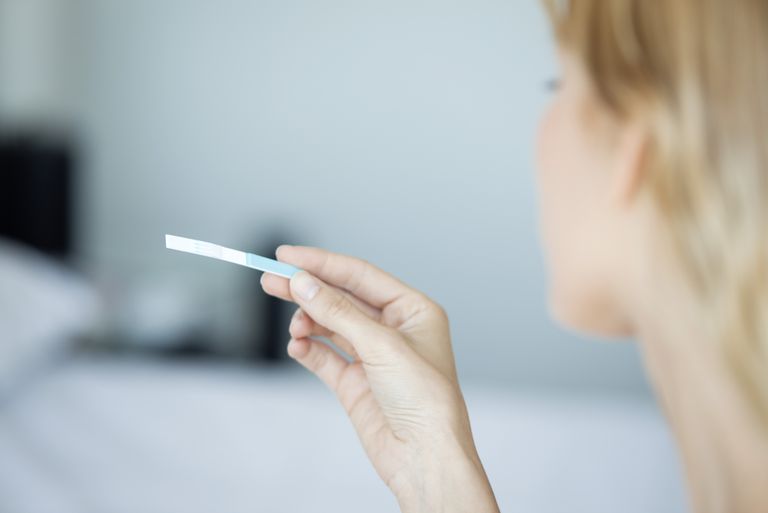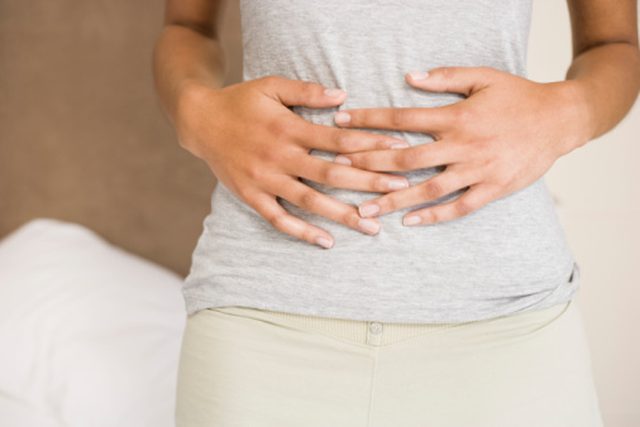The menstrual cycle is a complex mechanism that has several phases that follow each other. All of them are responsible for preparing for important events in the health and life of a woman - conception, as well as bearing a baby. For example, the ovulatory phase, which is in the middle of the cycle, is responsible for the release of a mature, ready to fertilize an egg.
To calculate and identify the time of greatest fertility, you need to know how to determine the ovulatory phase yourself.
Let's take a closer look at what it is - the ovulatory phase, what are its norms and features.
general information
The ovulatory phase of the menstrual cycle represents a certain period of time during which the reproductive system of representatives of the weak half of humanity is already fully ready for fertilization. As mentioned earlier, in most healthy women, the cycle lasts an average of about 28 days, and the following hormones are involved in it: estrogen, progesterone, luteinizing hormone. The menstrual cycle is divided into 3 phases:
- follicular;
- ovulatory;
- corpus luteum.

Ovulatory phase - what is it?
Around the 7th day of the menstrual cycle, the so-called dominant follicle is determined, which is rapidly growing and producing a large amount of estradiol. The remaining follicles regress. The follicle that is ready for ovulation is called the graaff bubble.
The duration of the ovulatory phase of the cycle is about 3 days. At this time, a lot of lutenizing hormone (LH) enters the bloodstream, while the release of this substance is observed within 1.5-2 days. The process leads to the maturation of the follicle, as well as the release of an already mature egg.
We continue to consider that this is an ovulatory phase. A decrease in estradiol contributes to the development of ovulatory syndrome. Mature egg is released within 24 hours of the release of LH. During ovulation, as a rule, 5-10 ml of follicular fluid, where the egg is located, is released.
Due to hormonal changes, cervical mucus is similar to protein. The egg moves to the fallopian tubes, where it remains for about 48 hours. Since spermatozoa live for about 5 days, the most favorable time for conception is considered to be the 14-15th day from the start of menstruation (subject to the average duration of the menstrual cycle).

FSH and ovulatory phase
So, we examined on what days the ovulatory phase is normal. And now it’s worth analyzing the role of hormones.
The hormone that stimulates the growth of follicles is present in the body in both men and girls and women, with different ages. Its function is to stimulate growth and to control the maturation of sperm and follicles. With the beginning of the cycle in the body of patients who have not yet reached the menopause, the follicular phase begins. At this time, FSH is formed, acting as a stimulant that has a positive effect on follicle growth.
If during the ovulatory phase the fertilization of the egg did not occur, then steroids in the blood are reduced. The pituitary gland resumes the formation of the hormone FSH, which is why the woman enters the follicular phase of the cycle again. The final process is considered to be menstruation.

During a laboratory study of biomaterial, the FSH hormone indicator is detected in compliance with the international standard. Usually it is done on the 3-5th day of the cycle. Throughout the cycle, the norm of this hormone can change:
- follicular phase - normal from 2.80 to 11.30 mU / l;
- normally from 5.80 to 21.00 mU / l - the ovulatory phase;
- the luteal phase is normal from 1.20 to 9.00 mU / l.
With a lack of this hormone, patients develop infertility, possibly the absence of ovulation, as well as genital atrophy. With an increased indicator of the hormone, the so-called endometrioid cysts can develop, uterine bleeding begins, or, conversely, the absence of characteristic menstrual flow for this period.
Ovulatory Progesterone
The ovulatory phase, which occurs on the 14-15th day, will be accompanied by an increase in the concentration of the hormone. After the egg leaves the follicle, the so-called corpus luteum grows rapidly, which contributes to the production of progesterone, popularly called the pregnancy hormone. With a high rate of progesterone, the woman’s body begins restructuring, because he received a signal about fertilization.
If progesterone does not decrease over several days, but, on the contrary, begins to grow, then it can be asserted confidently that a woman has become pregnant. Some patients may have a lower level of this hormone, indicating a spontaneous abortion. When pregnancy does not occur during ovulation, progesterone will decrease, which is why the corpus luteum dies after 2 weeks, and a new menstrual cycle begins in the woman’s body.

What days does it start?
The ovulatory phase of the cycle can be determined 2 weeks after the follicular phase. In the body of patients at this time, various changes can occur. The duration of the ovulatory phase with a 28-day cycle will be from 36 to 48 hours. This period is most favorable for conception, because a ripened egg already leaves the follicle and penetrates into the abdominal region. Its vitality is short, it is only 24 hours. If there is no fertilization at this time, then pregnancy will not occur.
In the ovulatory phase, the desire for patients increases, and their health improves. Involuntarily they follow the appearance, passion and femininity are awakened in them.
Estradiol
During the ovulatory peak (from 10 to 13 days of the cycle) in the body, the amount of the hormone estradiol should be in a certain range of 131-1655 pmol / L. When the hormone indicator is lower or higher than normal, this will cause the development of various deviations. An increase in estradiol is most often observed with pathologies:
- severe diseases of the liver and thyroid gland;
- metabolic disorders, accompanied by obesity;
- estrogen-producing tumors of the uterus and ovaries, as well as endometriosis;
- ovarian cyst (including follicular);
- taking individual medical contraceptives can lead to an increase in estradiol in the ovulatory phase.

Lack of hormone indicates psycho-emotional exhaustion, strong physical exertion, rapid weight loss, abuse of smoking and drinking alcoholic beverages, malnutrition. In chronic diseases of the reproductive system, as well as in violation of the reproductive system, the indicator of this hormone can also be significantly lower compared to the norm.
Menstrual or follicular phase
This phase corresponds to the first day of menstruation, which is the beginning of the menstrual cycle. Under the influence of the hormone, the endometrium is rejected, as a result of which menstruation begins. So the body prepares for the maturation of the egg.
In the follicular phase, algomenorrhea is often diagnosed in patients - painful sensations during menstruation. This condition will not be the norm, needs treatment. Failures in the functioning of the nervous and reproductive systems, as well as various organ ailments in the pelvis, are considered the cause of the pathology.
During menstruation, it is desirable to eat foods that are rich in iron, since its amount is reduced due to bleeding. It is recommended to be more often at rest, to reduce sports activities, and also to avoid stresses. Some women, due to poor health, are forced to take even a sick leave at this time.

Often the menstrual phase is accompanied by nervousness, as well as emotional lability. The duration of the follicular phase will be 7-22 days. At this time, the so-called dominant follicle matures, which is intended for fertilization.
Luteal phase
The time interval between ovulation and menstruation is called the luteal phase (or the corpus luteum phase). The duration is stable, is 12-14 days (± 2 days). At this time, the graaf bubble bursts and degenerates into the corpus luteum.
At this time, the corpus luteum synthesizes hormones. Due to the increase in progesterone, as well as estradiol, the state of the outer layer of the endometrium changes. The work of the glands from the mucosal layer begins, due to which the organ is prepared for the introduction of a zygote there.

Conclusion
We figured out that this is the ovulatory phase, which day of the cycle corresponds to it. Based on everything, we can conclude that the menstrual cycle includes several interconnected phases. The reproductive function of each woman will depend on how correctly the entire hormonal system works.